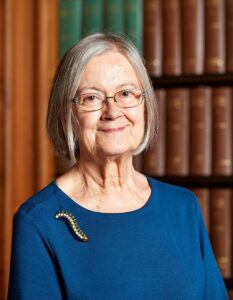Law-making was an entirely male activity in the UK until just over a century ago and has been dominated by men ever since. Barred from both standing and voting for Parliament, and also from becoming lawyers, women had to campaign vigorously for decades before they were grudgingly admitted, only to face discrimination, marginalisation and outright misogyny in these bastions of male power – features which, as the press reveals, we still see today.

So we should not be surprised to learn that women’s progress to the judiciary here has been slow and halting – two steps forward, one step back – from the time the first woman was appointed to a permanent judicial role in 1956, to the first woman appointed to our highest court in 2004, and beyond.
The UK does not have a career judiciary as do most continental jurisdictions. Instead, our judges are drawn from the ranks of practising lawyers, originally only barristers, but now occasionally solicitors and academics. Thus, instead of women entering the profession as soon as they finish their legal training, which leads to much better female representation in continental judiciaries, in the UK they must first establish themselves in a profession which admits more women at the start and then begins to lose them all along the way to the top.
The higher the status of the role, of course, the more exclusive the club and the more resistant members are to the appointment of people who are not like themselves – mainly white men educated at public school and Oxbridge – which explains why the proportion of women and people from ethnic minorities remains so low at the top.
Does it matter? Aren’t all judges dedicated to doing justice by applying the law objectively and rationally, and faithfully following precedent? That depends on whether you think objectivity and rationality, and following precedent, do actually do justice in every case; whether, indeed, you believe it is possible to be objective when you reason from a very limited knowledge of life and experience.
Lady Hale, recently retired from the presidency of our Supreme Court, came to the conclusion across her long career that the presence of women (and other people from different backgrounds than the archetypal white male) does indeed make a difference to judging – precisely because such people have difference experiences, see different things, offer different perspectives. Hale herself not only exemplified this difference as a state-educated woman but made a point of carrying it into practice in her judgments.

An avowed feminist, she lost no opportunity to show (where relevant) that laws can have a very different impact on women and children than on men; that women and children might have different viewpoints from men; that the court should recognise these, rather than blindly following precedents set with men in mind. It was not just women and children, where her personal experience counted. She showed how, if you are already different through one characteristic, you are more likely to appreciate other people’s differences – so she could see where distinctions of class, or race, or ability or sexuality – affected one’s access to rights.
For example, in the ‘bedroom tax’ case, where the Supreme Court considered the legality of the government’s cap on housing benefit, Hale held that the policy discriminated against a woman claimant, a victim of domestic violence, whose home had been specially adapted under a sanctuary scheme. Supreme Court cases are heard by five justices, and three of the other four – all men – expressed sympathy for the woman but upheld the policy.
This was but one of many cases, in some of which her view carried the day and in others, like this one, where she could only write a powerful dissent – where her sensitivity to the realities of life for women, children, gay and disabled people and people from ethnic minorities led her to a different outcome from that of the men whose preference was to apply the law faithfully, rather than to adapt it to do justice. It is not, of course, that men cannot do this – there have been plenty of liberal judges – but, rather, that they so often do not even see the difference, because nothing in their narrow lived experience has opened their eyes to it or caused them to care.
As the sole woman in the highest court until the very end of her career, Lady Hale achieved the almost unimaginable against the backdrop of our country’s judicial history: she won the respect and admiration of her male colleagues, whose limited experience and understanding of lives very different from her own was made so conspicuous by her presence. She widened their horizons, sometimes changed their views, even changed the law.
She is the living exemplar of why women judges matter, especially in the UK with its narrow pool of candidates and persistent tradition of exclusion. Towards the end of her career, there were three women (out of 12) in the Supreme Court. Today there is only one. As I said before, two steps forward, one step back. If we want justice for everyone, we need better courts than this.
Rosemary Auchmuty is a Professor in the School of Law at the University of Reading.

